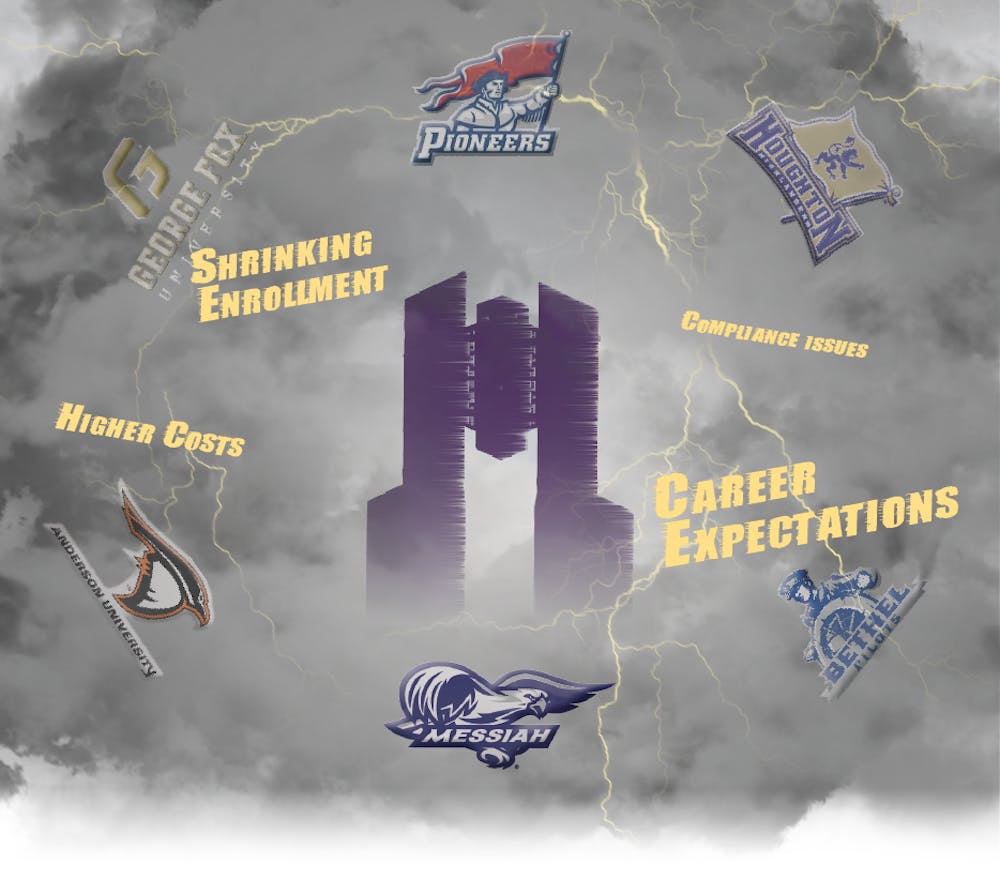By Kari Travis & David Adams | Echo
A recent financial crunch has forced Taylor to tighten its belt a notch-and take a look at strategies for the sustainability of its liberal arts education.
With tuition costs raised to satisfy a demanding budget, the university was able to generate an extra $1.8 million for the 2014-15 year. But that financial buffer soon gave way to escalating costs that chewed away the surplus, according to Stephen Olson, vice president for finance and chief financial officer at Taylor.
Higher financial aid awards immediately saw $1.2 to $1.3 million subtracted from the $1.8 million. With only $500,000 left to cover a pay raise for staff and a hike in healthcare costs, the university faced a financial dilemma.
"Very quickly, we used up the half a million dollars, and that's when we had to make cuts" Olson said. "It's very simple math from one perspective."University officials determined an additional $1 million in savings was needed to shore up finances. But even after a task force scraped together $650,000 of the required savings, other cuts were necessary.
In order to make up for the remaining $350,000 deficit, Taylor decided to discontinue three full time positions in the Educational Technology Center, Facility Services and Student Development. A part time job within the Registrar's Office was also discontinued.
Additional savings were made through the retirement of four individuals from Alumni and Parent Relations, the library, the provost's office and Information Technology. Those positions will not be replaced.
"To the four people who are retiring, we are grateful for their faithful service," said Taylor President Eugene Habecker. "To the four people who fill the positions that are being discontinued, this was a very difficult decision to make-and I know it is (a) significant hardship for them."
Attempts to provide as much notice and transition assistance as possible were made to those whose jobs were discontinued, Habecker said. All offices affected by the cuts have been directed to ensure essential services are still provided to students, faculty and staff, according to the university.
In an economy where conditions are driving the costs of college education higher, Taylor isn't the only university looking for ways to balance the budget while still maintaining quality. Peer universities within the Council for Christian Colleges and Universities (CCCU) are suffering similar financial straits, according to University Provost Jeff Moshier.
Anderson University, a sister institution near Taylor, suffered a seven percent dip in enrollment over the past three years, an event that forced the institution to seek $3 million in budget cuts. Similarly, Houghton College, a private Christian institution in New York, cut 10 to 15 percent of its academic budget for the 2014-15 school year. Other CCCU schools facing financial issues include Calvin College, Bethel College in Mishawaka, Ind. and Bethel University in Minnesota.
"But at the end of the day, it doesn't matter how we compare against them, it matters how we are internally," Olson said. "Are we internally structured, financially, to fulfill the mission Taylor's called to do? I would say right now yes, we are, but as you know, we have to take $1 million out of the budget next year to remain so."
Moshier sees several external factors that are behind escalating costs, the most significant of which may be a shrinking demographic."It's like the perfect storm in higher education," Moshier said. "Expectations for careers, the escalating costs of higher education, the services of a residential college-(all) are extremely expensive as compared to a public or commuter school."
To bear these costs, Taylor needs a stable-if not increasing-number of students to attend. Although Taylor's enrollment has been largely stable for the past three years, according to data from the U.S. Department of Education, the market for these students is shrinking. To attract a broader demographic, Taylor's recruitment efforts must become more creative-and more expensive, according to Olson.
To recruit diverse students, Taylor offers a variety scholarships in increasing numbers and amounts. The average student receives a 31 percent discount on their tuition due to these scholarships, a metric known as the discount rate. That's a nine percent increase compared to 10 years ago.Selling a liberal arts education like Taylor's in a sluggish economy is also an obstacle to overcome, Olson stated. A four-year degree from a rural, private, Christian institution may not seem as valuable in light of the many other educational options that are available.
"We have to articulate our own value proposition," Olson said. "What makes Taylor worth paying for?"
Convincing prospective 18-year-olds that Taylor is worth their while-and their wallet-is the most difficult challenge for the Taylor community, according to Olson.
As Taylor seeks to increase enrollment and capture the attention of diverse and changing student populations, financial demands remain. Because the university is committed to keeping tuition increases low, Olson said further budget reductions will likely be necessary.
"I have a hard time imagining not needing to do further cost reduction in the future," Olson said. "It's painful. But it's something we need to continue looking at in the future."




